In the past few decades, Chinese food overseas from the“Chinatown husband and wife“all the way to the evolution ofthe “world stage of branded food and beverage“. Among them, the most representative is Haidilao. It not only rolled out the ultimate service experience in China, but also set off a wave of“hot pot craze“in Southeast Asia.
So what makes Haijilao so hot in Singapore, Indonesia, Malaysia and other markets? And how did it make it to the Forbes list? If you also want to open a restaurant in Singapore, what licenses and processes are required? This article will take you a comprehensive explanation.

I. The rise of Seabrook Southeast Asia:
How Hot Pot Became Popular in Indonesia, Singapore & Malay?
1. From“three knives“to“restaurant empire“: a new path for Chinese food to go overseas
In the past, Chinese food oftenexistedoverseas in theformof“Chinatown Family Restaurant“, and the audience was mainly Chinese immigrants. Relying on“razors,” “scissors,”and“kitchen knives,“the first generation of Chinese made a living, but it was difficult to form a large-scale brand.
Enteringthe 21stcentury, Chinese cuisine ushered in a new model:chain, branding, localization.Haidilao, honey snow ice city, Yang Guofu, too two pickled fish and a number of other brands, the success of the“Chinese flavor“into an international business.
Among them, Haidilao is undoubtedly the most iconic representative. Sinceopening its first store in Singapore in 2012, Haidilao has pushed its hot pot culture to14countries with more than120overseas stores.
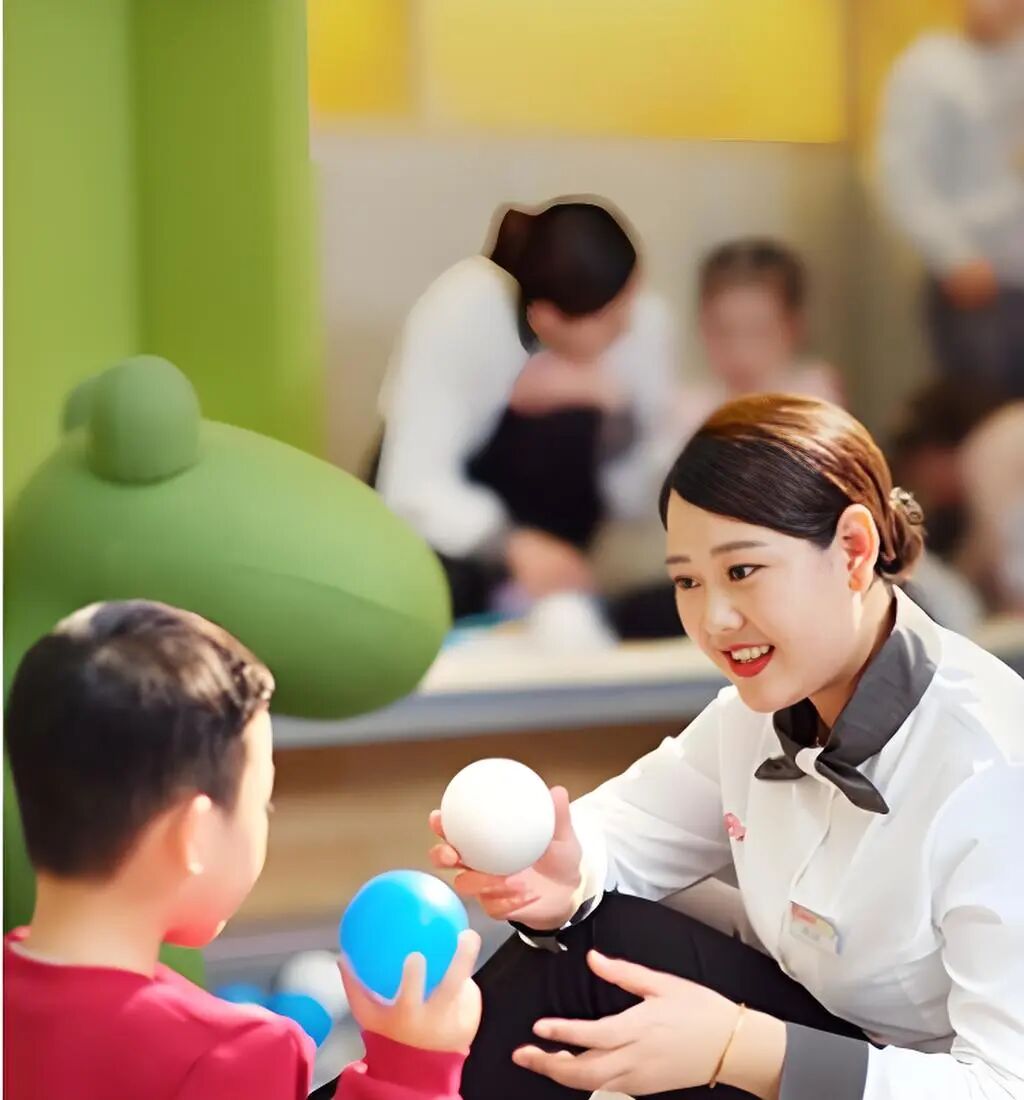
Image source: Hai Di Lao
In its2024year-end financial report, Haijia disclosed the operations of its overseas stores, with all of the overall Southeast Asian figures improving from2023.
Specifically, customer trafficincreasedfrom18.8millionin FY23to20.7millionin FY24;
The average table turnover raterosefrom3.5to3.7times perday;
Spending per customerrosefrom$19.50to$19.60;
Average daily revenue per restaurantrosefrom$15.0K to$15.7K;
The operating margin rose0.5percentage points to6.8%.
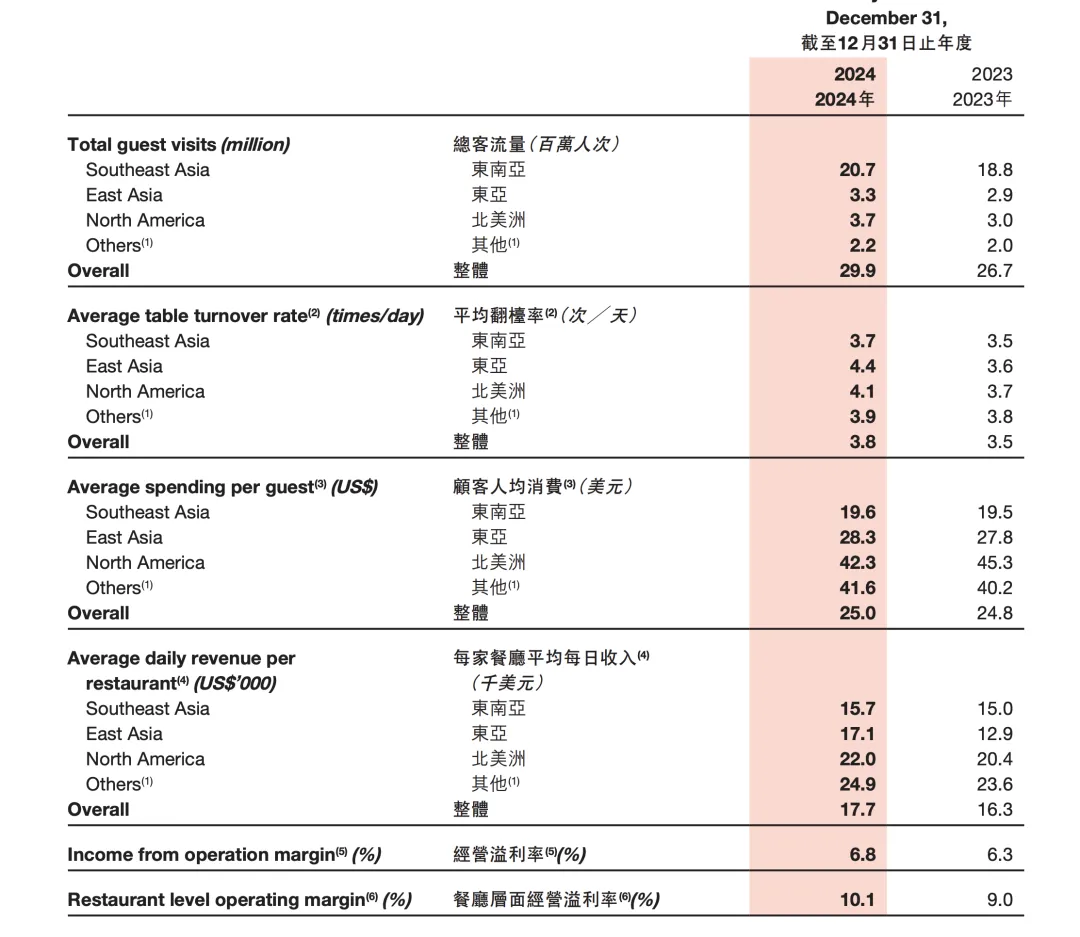
Source: Haijiaolu’s 2024 financial report
2. Indonesia: hot pot as a party standard
Indonesia is a heavy presence in Southeast Asia for Haidilao. Since itsarrival in 2019, it has openedeightstoresin Jakarta, Surabaya and Tanggelang in just a few years.
What’s more surprising is that hot pot, which was not a mainstream form of dining in Indonesia, has now become the“birthday party of choice“for many local young people.
Localization strategy:Indonesia’s Muslim population accounts for87% ofthe population, and Haidilao has specially introduced beef bone soup, chicken bone soup, and even created completely halal stores.
Cultural integration: staff dressed in traditional Badiq costumes to welcome guests, and service“in everydetail“.
Marketing Innovation:During theColdplayconcert, Haidilao provided free buses to transport the audience in Jakarta, which became a hot spot on social media screens.
Thisstrategy ofretainingthe “soul” ofChinese hot potwhile deeply embracing local culture has made Haidilao not just a“restaurant“buta trendy lifestylein Indonesia.
In Haidilao stores in Southeast Asia,theper capita spending ofcustomersin 2024is19.6U.S. dollars, which translates to about139yuan, while in China, the figure is97.5yuan.
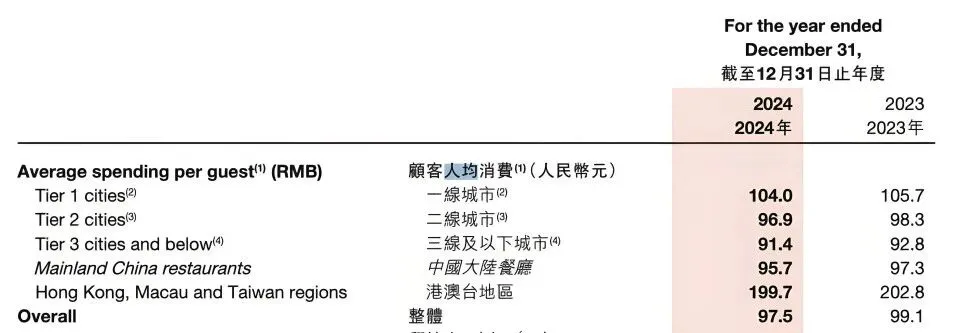
Source: Haijiaolu’s 2024 financial report
3. Singapore and Malaysia: bridgeheads for Chinese markets
Singapore is the first stop for Haidilao to Southeast Asia. With a large Chinese base, coupled with Singaporeans love to socialize, love to get together consumption habits, Haidilao quickly gained a firm foothold.
Malaysia is a different story. Although there are also many Chinese, the local restaurant competition is fierce, and halal certification is even more of a threshold. Haidilao has also gradually penetrated the market by introducing halal menus and strict ingredient management.
The data showsa significant increase in the overall operating figures of Seabrook Southeast Asia in2024:
Customer traffic:207million, upfrom188million in2023;
Average turnover rate: from3.5times/day to3.7times/day;
Per capita consumption: from$19.5to$19.6;
Revenue per store day: from$15,000 to$15,700per store day;
This means that Haidilao is not only gaining a foothold overseas, but also gradually improving its profitability.

Photo/Haidilao Clarke Quay Singapore (opened in 2012, adjustments to be made from August 31 this year, re-opening date to be confirmed)
4. Success code: direct operation+supply chain+service replication
Haidilao insists ondirect chain managementand unified management of supply chain and service standards. For example:
Yihai International: Provide the base;
Shuhai Company: Ingredients supply;
Microsea Consulting: training and manpower support;
The “pivotalization” ofthe supply chain, combined with thehybrid model ofsourcing local ingredients andexporting Chinese specialties, allows Hai Di Lao to maintain consistent tastes and meet local consumption habits.
At the same time,“nail salon, ramen show, children’s playground, birthday song” areall available, bringing the experience of a Chinese store overseas.
Bottom line: Haijilao can be hot because it can both“bring its own system“, but also“true to the ground“.
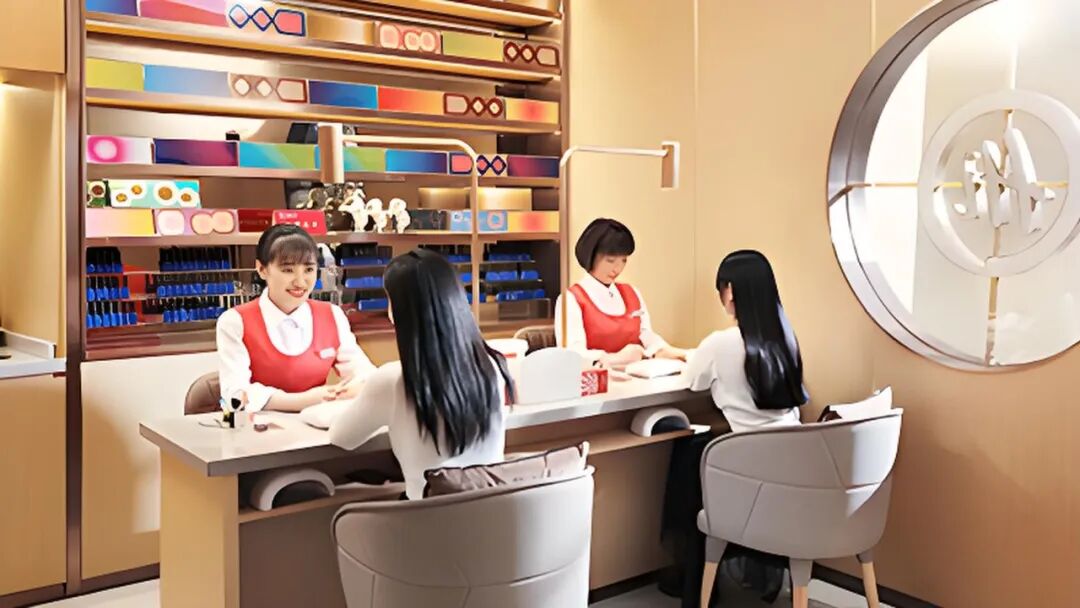
Image source: Hai Di Lao

II. Forbes Asia list:
Seabiscuit‘s$7.8billion ranks 10th
If the expansion of stores in Southeast Asia represents“quantitative growth“, then on the Forbes list, is the“qualitative recognition“of Hai Di Lao.
This year, Forbes announced the Asian rich list, the founder of Haidilao, Mr. and Mrs. Zhang Yong and Shu Ping, with a fortuneof 7.8billion U.S. dollars, ranked 10th. This is not only the wealth of the numbers game, but also the capital market and international public opinion on the value of Haidilao affirmation.
Meanwhile, Haidilao has long been ranked on Forbes Asia‘s “Top200Best Listed Companies” list, further cementing its position as a benchmark in the global restaurant industry.
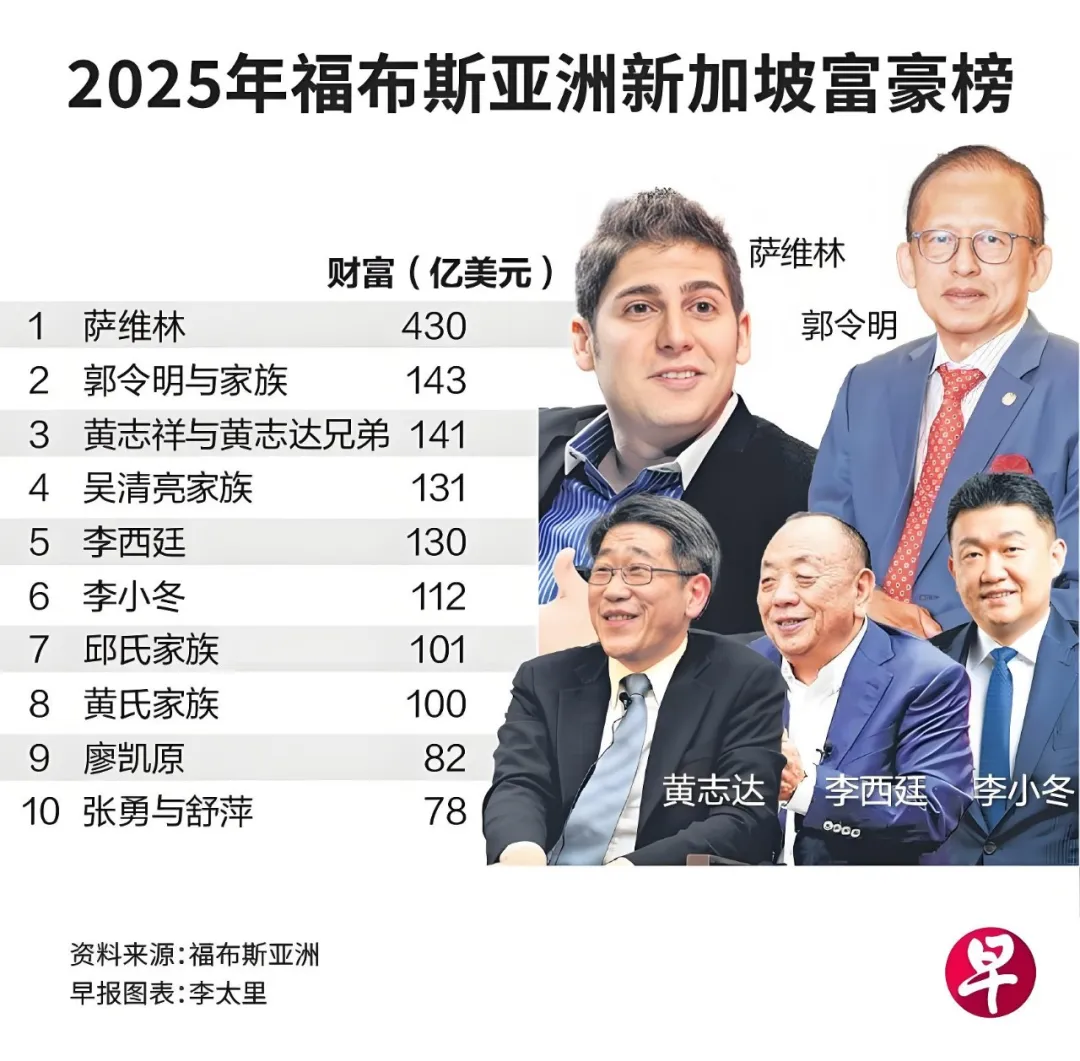
Photo credit:Forbes Asia, United Daily News
The reason behind this is:
1.Large scale of revenue:Haidilao’s annual revenue exceeds RMB 100 billion, ranking the top among global catering companies.
2.Rapid expansion:extensive overseas layout, especially in Southeast Asia, the growth rate is remarkable.
3.Strong brand:not only hot pot, but also a symbol of Chinese food globalization.
Haidilao can become the“Light of Asia“, relying not only on the hot pot flavor, but standardized, systematic mode of operation, as well as the ultimate polishing of service details.
This is also a revelation to all Chinese food brands that want to go overseas:good taste is just an entry ticket, whether it can gain a foothold in the capital market and form an international influence is what determines how far it can go.

Third, Singapore dining open store full strategy:
From License to Operation
If you’re inspired by the story of Hai Di Lao and happen to want to open a restaurant in Singapore, it’s important to get one thing right:don’t open your doors without a license.
Singapore’s F&B regulations are“world class“, but the benefits are: transparent, efficient and actionable. Here’s the full rundown.
1. Food Shop Licence(SFA)
Small License(Stall Type): Singapore Citizen/PRapplicationonly, no foreign staff allowed.
Large license(independent restaurant): need to submit floor plan, fire certificate of compliance, can hire foreign staff, suitable for formal restaurant.
Application route:GoBusiness platform, approval usually takes2-4weeks.
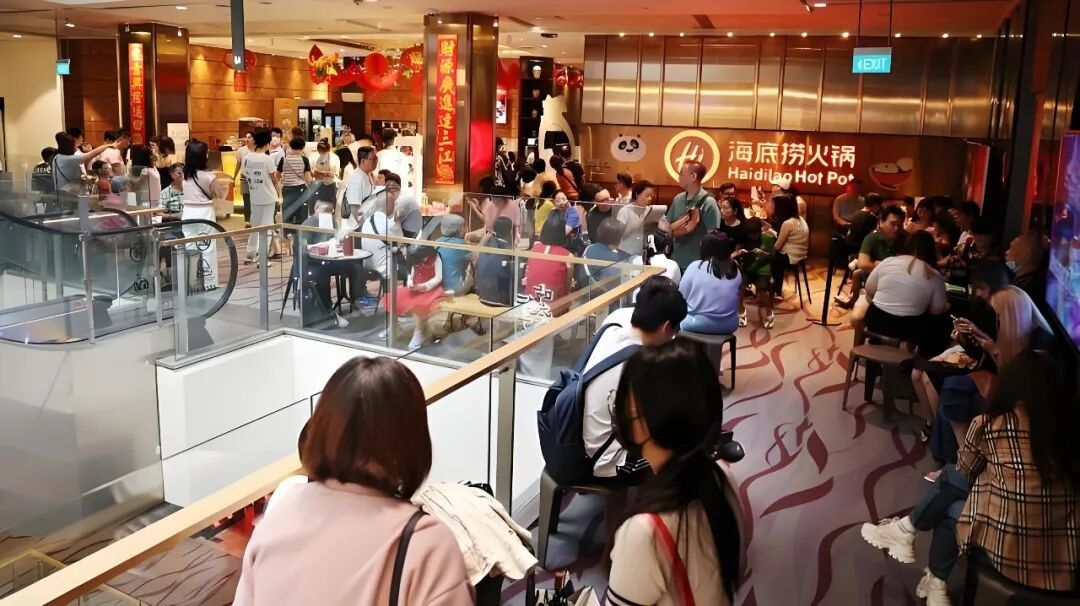
Photo credit: United Morning Post
2. MUISHalal Certification(Halal License)
Halal ingredients must be used with proof of supplier.
The kitchen is equipped with at least2-3Muslim staff withHalMQ certificates.
For restaurants serving the Muslim community, this isa key competency.
3. Liquorlicense(Liquor Licence)
If the restaurant sells beer, wine, or spirits, you must apply.
The cost ranges fromS$110 toS$880depending on the time and scope of the sale.
Approved by the Police Liquor Licensing Board.
4. Import licenses for foodstuffs
When it comes to meat, seafood, eggs, fruits and vegetables, you have to apply for an import license.
Ensure compliance with SFA ‘s food safety requirementsbysubmittingthrough GoBusiness .
5. Companyregistration(ACRA)
A companymust firstbe registeredwith the Accounting and Corporate Regulatory Authority of Singapore (ACRA).
Choose from sole proprietorship, partnership or private limited company.
The registration fee is aboutS$300 and usuallytakes 1-3days to complete.
6. WSQ FoodHygieneTraining
All chefs and caterers must complete WSQ training.
Includes6hours of lessons+ 1.5hours of assessment.
Obtain an SOA(Statement of Achievement), valid for5years.
7. Public entertainment license(optional)
If the restaurant offers live music,karaoke, dance performances, etc., an application is required.
CostsrangefromS$44-$960.
8. Time and cost estimates
Time: As fast as1monthfrom registering the company to getting the food store license.
Cost: License application, renovation, deposit, and equipment investment add up to at leastS$50,000 to S$100,000 to start.
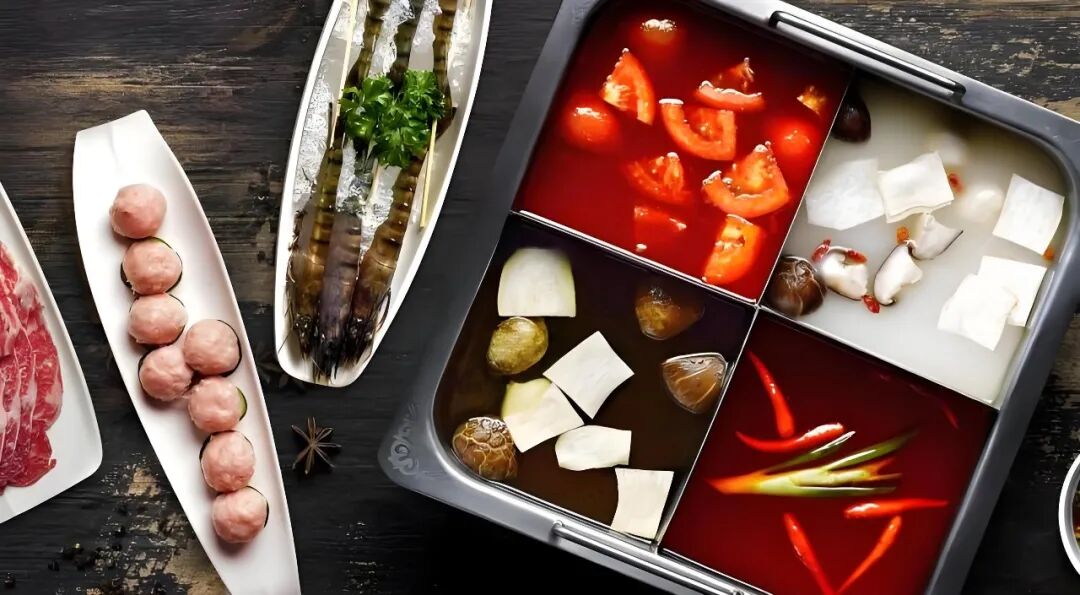
Photo credit: United Morning Post
Conclusion: The World Map of Hotpot and Opportunities for Entrepreneurs
The rise of Haidilao in Southeast Asia tells us one truth:
Chinese food is no longer just a “flavor of Chinatown”, but is becoming a major player on the world stage.
It’s success can’t be separated from: a standardized supply chain, a direct management model, replication of the service experience, and an extreme respect for local culture.
For entrepreneurs, Singapore is the perfect testing ground: a sound legal system, strong consumer power, Chinese culture and internationalization. If you want to replicate the “Hai Di Lao style of success”, you must first build a good foundation of compliance and licensing.
After all, opening a restaurant in Singapore is like cooking a hot pot: the base is passion and creativity, but the key to getting it “boiling” is whether the ingredients (licenses and compliance) are in place.
Note:References from SingaporeACRA,SFA,WSQ,SPW,MUIS,GoBusiness,IRAS, United Morning Post, Seafarer, Shanhaitu,Forbes Asia,, comprehensive news reports collated, reproduced must indicate the source, infringement and deletion of contact.
